Description
The cardiovascular system is responsible for delivery and drainage of blood to all parts of the body. Broadly considered, the cardiovascular system contains the heart, arterial system, venous system, and an extensive network of microscopic capillaries.
The heart is the hollow, muscular pump responsible for driving blood through the vascular network. Arteries carry blood away from the heart, to body tissues. Veins drain blood away from body tissues, returning the blood to the heart. Capillaries are the smallest blood vessels and act as the connection between the arterial and venous systems.
Furthermore, blood vessels may be subdivided based on the body region they supply (or drain). For example, systemic circulation refers to all the vessels of normal body tissues (gastrointestinal tract, brain, muscles, skin, etc.). Pulmonary circulation refers to the vessels associated with the lungs, and coronary circulation refers to the vessels supplying the heart muscle itself.
Related parts of the anatomy
Learn more about this topic from other Elsevier products
Cardiovascular system anatomy and physiology: Video, Causes, & Meaning

Cardiovascular system anatomy and physiology: Symptoms, Causes, Videos & Quizzes | Learn Fast for Better Retention!





